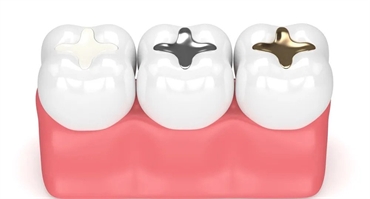Understanding Your Dental Filling Options Choosing the Right Fit for Your Smile

Discovering you have cavities requiring fillings can be unsettling, but these fillings are essential for restoring damaged teeth.
Dental fillings treatment serve to mend decayed, cracked, or worn teeth and come in various materials, each with distinct characteristics.
Types of Dental Filling Treatments:
1) Composite Filling:
Comprising a blend of plastic and glass powder, composite resin fillings are aesthetically pleasing. Dentists shape them while in a putty state and harden them with specialized LED lights. They're versatile, suitable for front and back teeth, addressing cavities, gaps, or cosmetic concerns. However, they demand precision and moisture control during application and may slightly shrink after hardening. Adequate oral hygiene is crucial to prevent future decay.
2) Amalgam Filling:
Often referred to as silver fillings, amalgam consists of silver, tin, copper, and a minimal amount of mercury. Despite concerns about mercury, it's safe within this mixture. Amalgam is preferred when maintaining a dry tooth surface is challenging. They are noticeable and tend to darken over time, making them less ideal for a natural look. In rare cases, they may contribute to tooth fractures, though this becomes apparent many years later.
3) Ceramic Filling:
Crafted from porcelain, ceramic fillings match natural tooth color and offer durability. They're used for various dental procedures like inlays, onlays, crowns, veneers, and implants. These restorations tend to have a longer lifespan but come at a higher cost and might require multiple appointments.
4) Gold Filling:
Comprising an alloy of gold, copper, and other metals, gold fillings are exceptionally durable and withstand chewing forces effectively. They're corrosion-resistant and do not stain teeth. However, their expense and visibility may deter some patients, and they are not commonly offered in dental offices.
5) Glass Ionomer Filling:
Made from acrylic and fluoroaluminosilicate glass, glass ionomer fillings are suitable for cavity-prone individuals as they release fluoride, aiding in tooth protection. They are less aesthetically pleasing due to their dull appearance and limited light reflection. These fillings are not as robust as others and cannot endure heavy chewing forces.
Maintaining any filling type necessitates good oral hygiene and regular dental check-ups. These practices ensure the longevity and effectiveness of your dental restorations.

